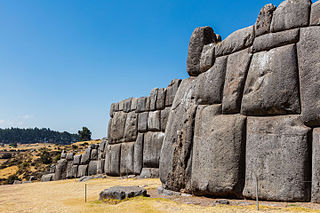
Cusco or Cuzco is a city in southeastern Peru, near the Sacred Valley of the Andes mountain range and the Huatanay river. It is the capital of the eponymous province and department. The city is the seventh most populous in Peru; in 2017, it had a population of 428,450. Its elevation is around 3,400 m (11,200 ft).
Pachacámac is an archaeological site 40 kilometres (25 mi) southeast of Lima, Peru in the Valley of the Lurín River. The site was first settled around A.D. 200 and was named after the "Earth Maker" creator god Pacha Kamaq. The site flourished for about 1,300 years until the Spanish invaded. Pachacamac covers about 600 hectares of land.

Andean music is a group of styles of music from the Andes region in South America.
Clothing in India varies with the different ethnicities, geography, climate, and cultural traditions of the people of each region of India. Historically, clothing has evolved from simple garments like kaupina, langota, achkan, lungi, sari, to perform rituals and dances. In urban areas, western clothing is common and uniformly worn by people of all social levels. India also has a great diversity in terms of weaves, fibers, colors, and the material of clothing. Sometimes, color codes are followed in clothing based on the religion and ritual concerned. The clothing in India also encompasses a wide variety of Indian embroidery, prints, handwork, embellishments, and styles of wearing clothes. A wide mix of Indian traditional clothing and western styles can be seen in India.

The Inca religion was a group of beliefs and rites that were related to a mythological system evolving from pre-Inca times to Inca Empire. Faith in the Tawantinsuyu was manifested in every aspect of his life, work, festivities, ceremonies, etc. They were polytheists and there were local, regional and pan-regional divinities.

Quechua people, Quichua people or Kichwa people may refer to any of the Indigenous peoples of South America who speak the Quechua languages, which originated among the Indigenous people of Peru. Although most Quechua speakers are native to Peru, there are some significant populations in Ecuador, Bolivia, Chile, Colombia, and Argentina.

Otavalo, capital of Otavalo Canton, has a population largely made up of the Otavalo indigenous group. It is located in Imbabura Province of Ecuador. According to the 2022 census, the town had a population of 41,718 and is situated at an elevation of 2,532 metres (8,307 ft). It is surrounded by the peaks of Imbabura, Cotacachi, and Mojanda volcanoes. Mario Conejo is the current mayor of the city of Otavalo.
The Quijos-Quichua (Napo-Quichua) are a Lowland Quechua people, living in the basins of the Napo, Aguarico, San Miguel, and Putumayo river basins of Ecuador and Peru. In Ecuador they inhabit in the Napo Alto as well as the rivers Ansuy and Jatun Yacu, where they are also known as Quijos Quechua. The Quijos Original Nation (NAOKI) has an extension of community territory of approximately 13,986, 78 hectares. It was recognized as such on March 13, 2013, by Codenpe. It is made up of dozens of groups, communities and organizations, according to their status.

The Inti Raymi is a traditional religious ceremony of the Inca Empire in honor of the god Inti, the most venerated deity in Inca religion. It was the celebration of the winter solstice^ – the shortest day of the year in terms of the time between sunrise and sunset – and the Inca New Year, when the hours of light would begin to lengthen again. Celebrated on June 24, the Inti Raymi was the most important festival of the Inca Empire, as described by Inca Garcilaso de la Vega, and took place in the Haukaypata, the main square of Cusco.
Maya textiles (k’apak) are the clothing and other textile arts of the Maya peoples, indigenous peoples of the Yucatán Peninsula in Mexico, Guatemala, Honduras, El Salvador and Belize. Women have traditionally created textiles in Maya society, and textiles were a significant form of ancient Maya art and religious beliefs. They were considered a prestige good that would distinguish the commoners from the elite. According to Brumfiel, some of the earliest weaving found in Mesoamerica can date back to around 1000–800 BCE.

Inti is the ancient Inca sun god. He is revered as the national patron of the Inca state. Although most consider Inti the sun god, he is more appropriately viewed as a cluster of solar aspects, since the Inca divided his identity according to the stages of the sun. Worshiped as a patron deity of the Inca Empire, Pachacuti is often linked to the origin and expansion of the Inca Sun Cult. The most common belief was that Inti was born of Viracocha, who had many titles, chief among them being the God of Creation.
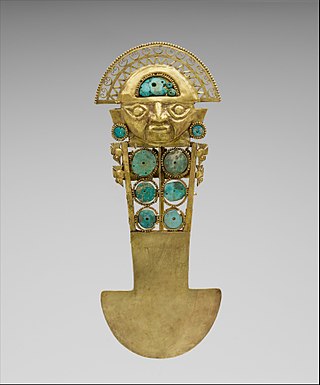
Tumi, is a generic term encompassing the many kinds of sharp tools utilized in pre- and post-colonial eras of the Central Andes region, Tumis were employed for a diverse set of purposes such as kitchen knives, agricultural tools, warrior or hunting secondary weapons, sacrificial knives, barber implements, pendants, or medical tools. In addition, the tumi form, in metal, was used as a type of coin. Pre-columbian Tumis were usually made of metal or stone.
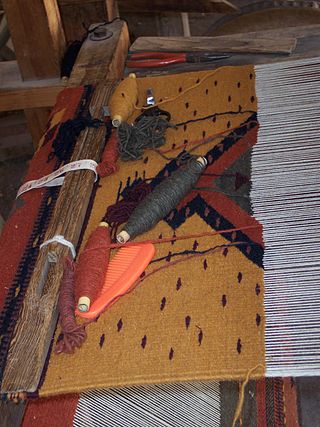
The state of Oaxaca in southern Mexico has a noteworthy tradition of finely crafted textiles, particularly handmade embroidery and woven goods that frequently use a backstrap loom. Oaxaca is home to several different groups of indigenous peoples, each of which has a distinctive textile tradition.
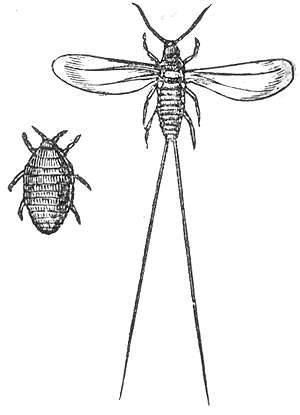
The cochineal is a scale insect in the suborder Sternorrhyncha, from which the natural dye carmine is derived. A primarily sessile parasite native to tropical and subtropical South America through North America, this insect lives on cacti in the genus Opuntia, feeding on plant moisture and nutrients. The insects are found on the pads of prickly pear cacti, collected by brushing them off the plants, and dried.

Cotacachi is a town that is the seat of Cotacachi Canton, Imbabura Province, Ecuador, in South America. Cotacachi is located at an altitude of 2,418 metres (7,933 ft) and had a population of 8,848 in 2010.

Pachamama is a goddess revered by the indigenous peoples of the Andes. In Inca mythology she is an "Earth Mother" type goddess, and a fertility goddess who presides over planting and harvesting, embodies the mountains, and causes earthquakes. She is also an ever-present and independent deity who has her own creative power to sustain life on Earth. Her shrines are hallowed rocks, or the boles of legendary trees, and her artists envision her as an adult female bearing harvests of potatoes or coca leaves. The four cosmological Quechua principles – Water, Earth, Sun, and Moon – claim Pachamama as their prime origin. Priests sacrifice offerings of llamas, cuy, and elaborate, miniature, burned garments to her. Pachamama is the mother of Inti the sun god, and Mama Killa the moon goddess. Mama Killa is said to be the wife of Inti.
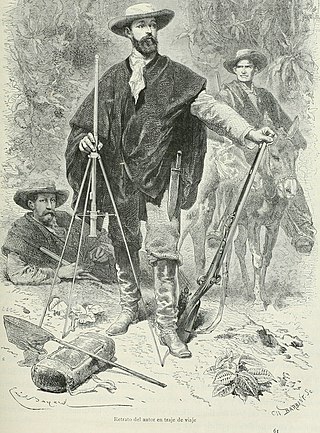
A ruana is a poncho-style outer garment native to the Colombian and Venezuelan Andes. In Colombia, the ruana is the characteristic and traditional garment of the department of Boyacá, initially made by indigenous and mestizo people, although it is also made in the departments of Cundinamarca, Antioquia, Nariño, Bogotá, Santander (Colombia), Norte de Santander and Caldas. In Venezuela it is widely used and made in the Andean states of Táchira, Mérida and Trujillo, used since the colonial times by all Venezuelan inhabitants, currently only in the Andean region its traditional use is maintained.

Dactylopius is a genus of insect in the superfamily Coccoidea, the scale insects. It is the only genus in the family Dactylopiidae. These insects are known commonly as cochineals, a name that also specifically refers to the best-known species, the cochineal. The cochineal is an insect of economic and historical importance as a main source of the red dye carmine. It has reportedly been used for this purpose in the Americas since the 10th century. Genus Dactylopius is also important because several species have been used as agents of biological pest control, and because several are known as invasive species.
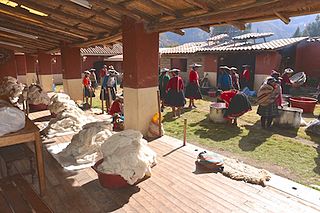
Centro de Textiles Tradicionales del Cuzco was founded by indigenous weavers from the community of Chinchero as well as international supporters in 1996 as a non-profit organization. It is based out of the city of Cusco, Peru where its main offices, museum and shop are located. The CTTC works in support of indigenous weavers from the Cusco region to recover traditional Cusqueñan textiles. The organization currently partners with ten communities from the Cusco region: Accha Alta, Acopia, Chahuaytire, Chinchero, Huacatinco, Mahuaypampa, Patabamba, Pitumarca, Santa Cruz de Sallac, and Santo Tomas (Chumbivilcas).

The Plaza de Armas of Cusco is located in the city of Cusco, Peru. Located in the historic center of the city is the main public space of the town since before its Spanish foundation in 1534.

















